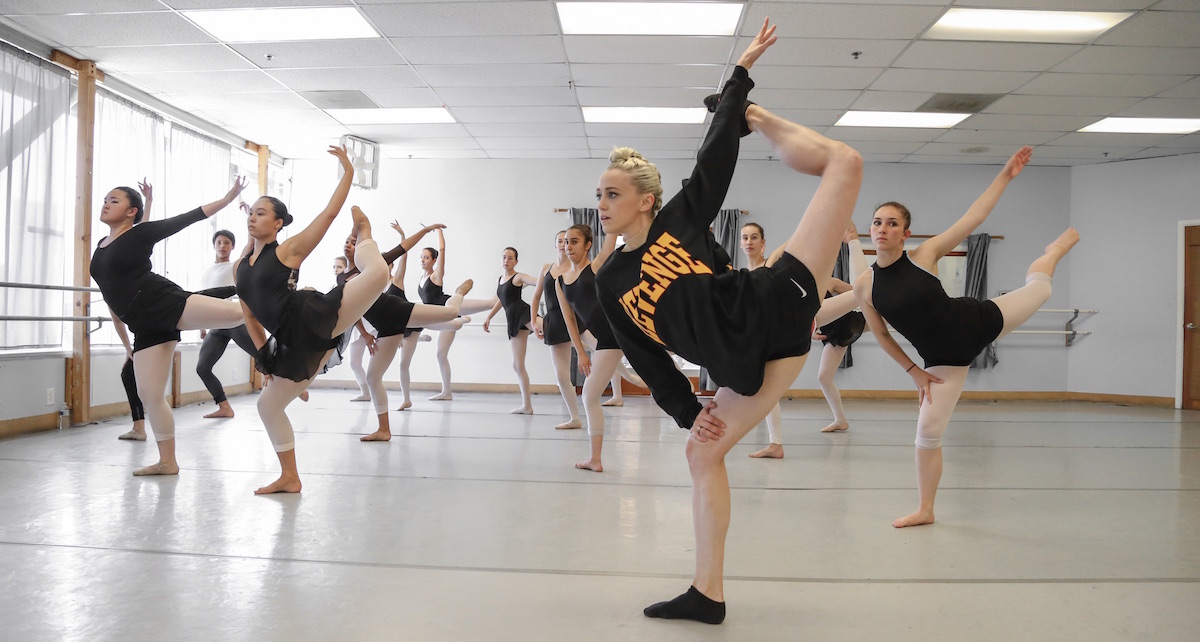Auditions are a performers’ business. Once the dancer has the job, one of the hardest parts is over. There are skills to auditioning, and things for dancers to learn about how they respond to stress in group situations. The skills of auditioning can be taught in everyday class – responding to open work, managing stress of being watched and maintaining focus.
“I teach audition technique all the time,” says Terry Simpson, from Terry Simpson studios in Adelaide. “Not that all of my students are going to be dancers, but I say, ‘If you can do it in a dance class, then you can do it in the rest of life.’ Each time you do a performance or an exam, you are having to stand up and be responsible for yourself. You have already learnt that this is part of life, also part of auditioning and part of dance.”
Simpson is an advocate of incorporating audition technique into classwork.
“I do quite a lot of open work in my classes, because if you are in an audition it is not going to be set work,” Simpson explains. “I teach them how to manage in a classroom, how to manage with new material, and not to stand at the back of the classes all the time – you need to be seen. Most of my students are not frightened of auditions. It is part of the teaching process, if you teach your classes like that, then it is part of the learning process of all classes and not such a big deal when it comes to actual auditions.”
Some teachers use auditions to choose parts for students. This can allow teachers to be more in control of the assets and the skills that are valued and that students are striving for. So rather than encouraging the height of extensions and the number of turns, auditions can be a way of reinforcing that musicality and solid technique are just as important.
Simpson says, “I like my kids to have to earn where they get to. So if I have an incredibly talented child, in my school they still have to crawl up the ladder, even if everyone knows that that young student is the best. Everybody learns many of the parts, and then it is very clear how I chose the parts. TV shows like So You Think You Can Dance are about overnight stars. Real enduring careers are not about that. They are up and down and hard work. Well, then the point is how are you going to manage that? Do you love dance enough to manage that? I am always teaching that.”

Charisse Parnell knows firsthand the value of mock auditions:. Three weeks after having done a mock audition in their studio, a New York producer came into her studio to audition for dancers for a musical trailer he was filming that weekend. Photo by Parnell.
Since some competition can be very healthy, it can be valuable to finds ways to support that in a school. Students watch their peers achieve and learn from each other. It is natural to want to be able to do what your peer can do. Competition can encourage students to strive for more in each class.
Charisse Parnell of The Dance Collective in Western Australia agrees. “Once our dancers hit 16 or 17 years, we explicitly train for this through mock or real class auditions,” she says. “I give them a theme or a genre, and they dress accordingly. It pushes them. I’ve seen dancers improve and extend themselves unbelievably when put under that pressure to give their best. It gives a great energy to the class. When doing mock auditions, I give them helpful tips along the way and constant feedback so they know what to improve on. I try to make them as fun as possible, as auditions should be enjoyed. I know this builds their confidence, and they don’t find real auditions so daunting.”
Thanks to Terry Simpson and Charisse Parnell for their insights into this topic. For further information on their schools, contact: Terry Simpson Studios at www.terrysimpsonstudios.com.au, and The Dance Collective at www.thedancecollective.com.au.
By Tamara Searle of Dance Informa.

















